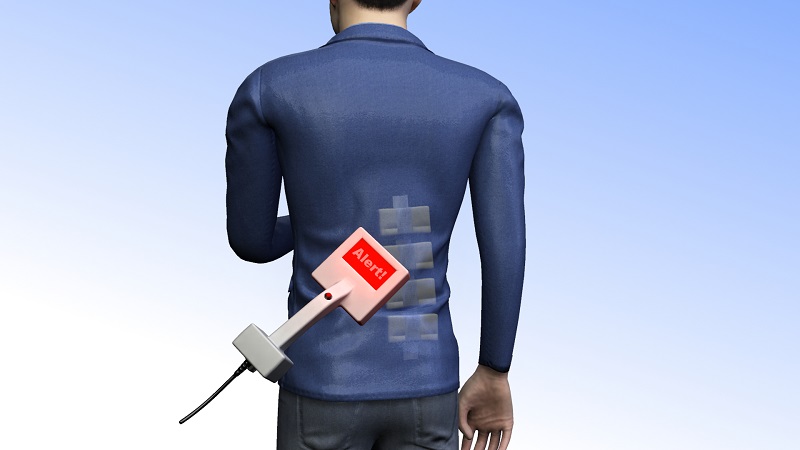
We’ve all walked through a metal detector at the airport, hoping we didn’t forget anything in our pockets that will set off the alarm. When security personnel can’t immediately identify what is triggering the alarm, the process is halted for a pat down. Though this slows the screening process significantly for people waiting in line and can be an uncomfortable experience for the individual being screened, it is an essential element of keeping all travelers safe.
To improve airport security, both for screeners and for those being screened, the Department of Homeland Security (DHS) Science and Technology Directorate (S&T) continually invests in research and development (R&D) to build solutions for the future. S&T’s Screening at Speed Program partners with government, academia, and industry to increase security effectiveness at the airport from curb to gate, while dramatically reducing screening wait times and improving the passenger experience.
In 2020, Screening at Speed leveraged the DHS Small Business Innovation Research (SBIR) Program to develop improved handheld screening wands using millimeter wave (MMW) technology to resolve alarms and reduce the need for pat-downs. Design concepts defined by Screening at Speed included detecting metallic and non-metallic anomalous objects, classifying object materials, and using automated algorithms that protect privacy while distinguishing between concealed objects and clothing or skin.
“We leveraged our SBIR program to fund two different innovative handheld scanners based on newly-available and low-cost 5G electronics,” said federal project manager Karl Harris, Ph.D., of S&T’s Screening at Speed program. “Development and implementation of these wand technologies will improve passenger experience, reduce transportation security officer (TSO) burden, and allow more thorough screenings.”
Developing a multi-functional touchless screening solution also enables on-demand security screening in environments where traditional screening systems aren’t in place. This will allow DHS to more efficiently support the mission of its component agencies who protect our borders, coasts, and government. Solutions could also be used to enhance security at large-scale gatherings and sporting events.
While handheld screening technology of this caliber has been an S&T goal for several years, the data requirements and hardware costs were prohibitive until recent technology advancements made development a reality. The rise in 5G cell phones, automotive radars, embedded computing, and other critical enabling technologies creates the perfect opportunity for small companies to integrate commercial-off-the-shelf (COTS) technologies to build and transition next-generation screening solutions like the handheld millimeter wave wand.
In April 2021, S&T awarded Spectral Labs Inc. of San Diego, California, and TeraMetrix LLC of Ann Arbor, Michigan, 24-month SBIR Phase II contracts to build on the prototypes they demonstrated in 2020 after completing six months of Phase I development. Key requirements given to the performers for both phases of development include compensation for intentional or unintentional shaking of the wand, a minimum three to four hours of battery life, and a targeted volume cost of $5,000 or less.
At the end of Phase I, Spectral Labs’ prototype exhibited detection capability for objects under thin clothing and a variety of material classes. Their focus during Phase II will be on improving object detection in more challenging scenarios, meeting environmental concerns, and detecting and classifying explosive materials. The goal is to add these features to two different prototypes by the end of Phase II and to meet non-screening design parameters such as size, weight, durability, and battery life.
TeraMetrix is using a variety of simulated threat objects to test the detection capabilities of different configurations of COTS Frequency Modulation Continuous Wave (FMWC) hardware. The FMWC hardware improves the measurement accuracy and simplifies the computing process. Their Phase I wand prototype demonstrated initial object reconstruction capabilities, using the sensors data to create a representation of what the wand is scanning. During Phase II, they are focused on integrating the feature into three new prototypes. They will also be attempting to provide alarm resolution screening data in real time.
At the conclusion of Phase II contracts, the prototypes and performance for both companies will be evaluated by the Screening at Speed team to determine next steps for the development program. Once a prototype is ready for commercialization, potential applications include use as a secondary screening tool to reduce the number of pat downs TSOs at the Transportation Security Administration (TSA) need to perform; as a primary and secondary screening tool at border crossings; as a primary screening tool at ad-hoc security checkpoints and large events managed by law enforcement; and as part of the security apparatus for high-profile security screenings.
“The DHS SBIR partnership has proven extremely valuable for pursuing innovative concepts like handheld millimeter wave wands,” said Sharene Young, S&T’s TSA portfolio manager. “Development of contactless alarm resolution tools are a game-changing capability for reducing physical contact during the screening process and staying ahead of the changing threat landscape. We are very excited to see how this capability matures during Phase II.”

